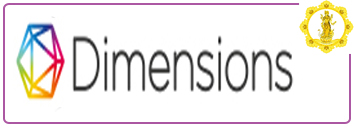PESAN MORAL DALAM CERITA UTTARAKĀNDA RAMĀYĀNA (Kajian dalam Perspektif Susila Pendidikan Agama Hindu)
DOI:
https://doi.org/10.25078/japam.v1i1.2163Keywords:
Ramāyāna, Moral Message, UttarakāndaAbstract
Itihāsa is one part of the breadth of Vedic knowledge, which must be learned at the initial stage of learning Vedas. Speaking further about Itihāsa, Itihāsa consists of two great epic literature, namely Ramāyāna and Mahābhārata. So that the initial knowledge that one can learn when studying Itihāsa is the Ramāyāna book. The Ramāyāna book itself is generally composed of 7 parts known as the Sapta Kānda. Then in the resolution section there is the final Kānda section known as Uttarakānda and of course it contains a moral message. Reflecting on this, this research is interested in examining more deeply the story of Uttarakānda Ramāyāna, to find the moral message contained therein in the perspective of Susila's teachings. In this study, several problems were also formulated, namely related to the nature of the Sapta Kānda Ramāyāna, the Uttarakānda Ramāyāna story, and the moral messages contained therein. By using research methods with the type of qualitative research, and literature study and using data analysis from Miles and Huberman. The results of this study indicate that the story of Uttarakānda Ramāyāna contains many moral messages that are useful for life. It is hoped that this research can be an initial provision for someone who is just learning the Vedas, then they can become a better person through the moral message they receive.
References
Adiputra, dkk. 2004. Dasar-Dasar Agama Hindu. Surabaya: Depatemen Agama Republik Indonesia.
Budhita S, I Nyoman. 2019. Manusia, Agama, dan Sastra. Yogyakarta: Deepublish Publisher.
Dwaja, I Gusti Ngurah dan Mudana, I Wayan. 2018. Pendidikan Agama Hindu dan Budi Pekerti untuk Siswa SMA/SMK Kelas XII (Edisi Revisi). Jakarta: Pusat Kurikulum dan Perbukuan, Balitbang, Kemdikbud.
Gata, I Wayan. 2020. Dekontruksi dan Rekontruksi Fenomena ‘Nitip Raga’ pada Sejumlah Keluarga Hindu di Jawa Timur. Badung: Nilacakra.
Gunarsa, Singgih D. 2017. Perkembangan Psikologi. Jakarta: PT BPK Gunung Mulia.
Mantra, Ida Bagus. 2018. Tata Susila Hindu Dharma. Denpasar: Udayana University Press.
Maswinara, I Wayan. 1997. Bhagavad Gita: Dalam Bahasa Inggris dan Bahasa Indonesia. Surabaya: Paramita.
Oka, Ida Pedanda Gde Nyoman Jelantik. 2009. Sanatana Hindu Dharma. Denpasar: Widya Dharma.
Salim dan Haidir. 2019. Penelitian Pendidikan (Metode, Pendekatan dan Jenis). Jakarta: Prenada Media Group.
Sandika, I Ketut. 2014. Membentuk Siswa Berkarakter Mulia Melalui Pola Pembelajaran Agama Hindu: Telaah Teks Kitab Chandogya Upanisad. Surabaya: Paramita.
Sudharta, Tjok Rai. 2019. Sarasamuccaya Sanskerta dan Bahasa Indonesia (Cetakan Kedua). Denpasar: ESBE Buku.
Sudirga, Ida Bagus, dan Segara, I Nyoman Yoga. 2014. Pendidikan Agama Hindu dan Budi Pekerti untuk Siswa SMA/SMK Kelas X. Jakarta: Pusat Kurikulum dan Perbukuan, Balitbang, Kemdikbud.
Sudirga, Ida Bagus, dan Segara, I Nyoman Yoga. 2014. Pendidikan Agama Hindu dan Budi Pekerti untuk Siswa SMA/SMK Kelas X. Jakarta: Pusat Kurikulum dan Perbukuan, Balitbang, Kemdikbud.
Sugiyono. 2007. Metode Penelitian Pendidikan (Pendekatan Kuantitatif, Kualitatif, dan R&D). Bandung: Alfabeta.
Suratmini, Ni Wayan. 2016. Buku Penunjang Materi Agama Hindu dan Budi Pekerti untuk Siswa SMA/SMK Kelas X - Semester Ganjil. Denpasar: Tri Agung.
Titib, I Made. 2008. Itihāsa Ramāyāna & Mahābhārata (Viracarita) Kajian Kritis Sumber Ajaran Hindu. Surabaya: Paramita.









